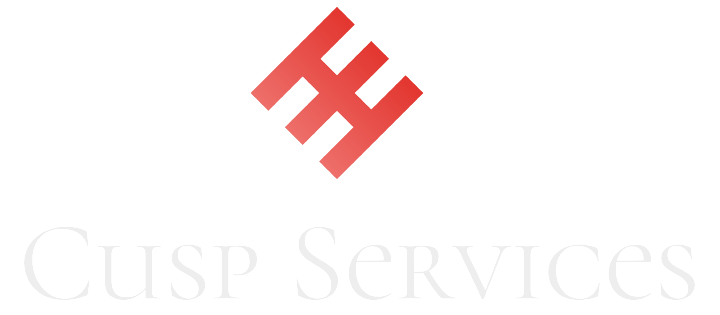As per McKinsey Global Institute, data-driven organizations are 23 times more likely to acquire new customers, six times as likely to retain them, and 19 times more likely to be profitable. Furthermore, over 62% of retailers report that data analytics creates a competitive advantage for their organizations.
This shows that data is undoubtedly a fundamental asset for improving business outcomes. But most businesses struggle to understand the right usage for gaining a competitive edge in the industry against other rivals.
In this last article of our 4-part series, “Competitive Advantage,” we walk you through why data is a great competitive advantage for businesses around the world and how you can effectively leverage it for your organization.
Benefits of Data for Creating Competitive Advantage
Data and competitive advantage are deeply interlinked concepts. Businesses have been trying to build their competitive advantage by reducing costs, improving customer service, developing new products, etc. But they often overlook data’s potential to strengthen and sustain their market position.
For instance, data can provide organizations with new ways of cost-cutting to improve their competitive advantage. Analytics can reveal flaws and inefficiencies in production and deployment, which can’t be determined through conventional means.
Businesses can hence focus on removing those inefficiencies and flaws and reducing product wastage to develop new measures for cost-cutting.
Airbus is an excellent example of this. It leveraged data analytics to improve its manufacturing, development, and maintenance operations. Similarly, organizations, even Fortune 500 companies, can leverage such analytics to learn how to use their resources more efficiently and reduce the disruptive interruptions in their operation.
In addition, data analytics provide insights into business operations that can help organizations deploy their resources intelligently without cutting costs. It can further help them provide personalized service to their customers.
Organizations can use analytics to capture and examine customer demographics, purchase history, buying preferences under specific circumstances, etc. It allows for personalized branding campaigns to boost brand awareness and engagement.
Brands like Netflix and Amazon have raised the bar in user experience. They use past purchase data to provide specifically catered recommendations. This is an excellent example of how businesses can upsell and cross-sell and make it hard for their rivals to follow suit.
What Kinds Of Data Do Companies Collect?
Businesses need different types of data to ensure their growth. It can be broadly divided into two categories: qualitative and quantitative data. Qualitative data captures the emotions and intentions of the individuals. It is usually collected through in-depth interviews, group discussions, focus groups, document reviews, etc.
On the other hand, quantitative data is numerical in nature. Companies collect such datasets through questionnaires, experiments, surveys, observations, etc. Such data is more accurate, credible, and reliable as it can be analyzed mathematically.
There are numerous other kinds of data that businesses can collect. It includes basic consumer information such as their names, phone numbers, email addresses, IP address, etc. Moreover, they can also leverage their customers’ location, past internet search queries, and even ads that they click online.
With this, businesses can better target customers with email newsletters, SMS marketing updates, special offers, etc. Companies like Facebook, Instagram, Uber, etc., collect customer data through face recognition, contact, voice/data recognition, people’s image library on their phones, website activities, languages, etc.
This improves reach and enhances lead generation for organizations. By seeing their site interactions and ad responses, companies can gauge the actual interest levels that the customers have in them.
Different Ways to Collect Data
If you are a small company, you can start collecting and leveraging data by asking for it and indirectly tracking your customers through email, location, third-party tracking apps, etc. When a customer registers with your website, subscribes to your service, or buys something from you for the first time, you can ask them to fill out a form.
You can also gather this data by creating gated content like Ebooks that can be downloaded once the customer fills out a form. That can help you collect basic customer information and demographics to reach out to them in the future. Later, conducting surveys and asking direct questions to the customers can also help.
Creating a dedicated mobile app for your services and having an active social media presence are effective ways to gather insights and analyze customer behavior.
You can get to know their interests and improve your marketing strategies accordingly. Moreover, when they check in on your social media page or download your app, their location data is stored. It helps in tracking their activity.
Using Your Website
Your company’s website is one of the most effective sources of data collection. Big companies with access to better technologies can gather and track data from numerous online sources. But for smaller businesses, website cookies and web beacons enable them to track their customers’ browsing histories.
You can understand where they were when exiting your company’s site, their engagement level, and time spent on the website. With the right technologies, you can use this data to target your customers with ads.
Learning from Mastercard
Mastercard is another great example of leveraging data to improve revenue and staying ahead of their competitors. A decade back, less than 5% of its revenue was credited to services it offered, while the rest came from transactions it powered. But that changed when they leveraged the data they collected from doing millions of worldwide transactions. They had access to data about consumer behavior, global trade, and everything in between, which they started using to their advantage.
Today, Mastercard offers analytics services to merchants to take the guesswork out of decision-making and take intelligent, data-backed actions. As a result, 25% of their business now comes from these services like Market Basket Analyzer, SpendingPulse, Intelligent Targeting, Portfolio Intelligence, and more. Incredible right!
Let’s Recall the Power of Competitive Advantage.
Let us look back at what we have learned from our 4-part series on Competitive Advantage:
- In the first part, we helped decode its meaning and significance in differentiating from its competitors, attracting more customers, and driving up sales and ROI. We also pointed out questions you should be asking to create a sustainable advantage that aligns with customers’ needs, company offerings, and the competition.
- Next, the second part discussed the different ways to build a winning competitive strategy by leveraging Porter’s generic strategies, Porter’s five forces, and SWOT analysis.
- In the third part, we learned the competitive strategies implemented by the best-in-class companies worldwide. We further discussed the best practices you can follow to leverage your competitive advantage and scale your company.
- Lastly, in this fourth and final article of our series, we discussed the importance of leveraging data for competitive advantage and the different ways of doing so.
To know how you can gain a competitive advantage, stay on top of your game and generate exciting future growth opportunities, get in touch with us today.


